Over 3,400-year-old jade, stone "workshop" discovered at China's legendary Sanxingdui Ruins
* Archaeological authorities unveiled groundbreaking discoveries, including a jade and stone artifact "workshop" dating back over 3,400 years, at the legendary Sanxingdui Ruins site.
* Since 2022, over 400 sites have been identified, including high-level building foundations, ash pits, ash ditches, and stone artifacts production and processing sites at Sanxingdui. More than 4,000 artifacts, including pottery, jadeware and stoneware, have been unearthed. To date, more than 60,000 cultural relics have been unearthed at Sanxingdui.
* Archaeologists believe that the core area of the ruins is a meticulously planned ancient city.
CHENGDU -- Archaeological authorities have recently unveiled groundbreaking discoveries, including a jade and stone artifact "workshop" dating back over 3,400 years, at the legendary Sanxingdui Ruins site. The new finds offer vital insights into the origins of various precious cultural relics and highlight the remarkable achievements of ancient Chinese civilization.
Discovered in the late 1920s in the city of Guanghan, southwest China's Sichuan Province, the Sanxingdui Ruins have been dubbed as one of the world's greatest archaeological finds of the 20th century.
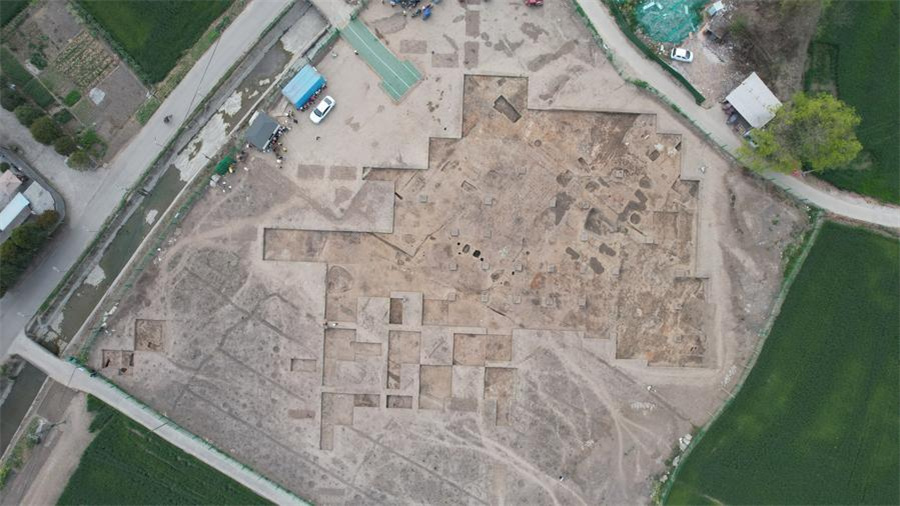
An aerial drone photo taken on March 23, 2024 shows a view of the Sanxingdui Ruins site in Guanghan City, southwest China's Sichuan Province. [Sichuan cultural relics and archaeology research institute/Handout via Xinhua]
The provincial cultural relics and archaeology research institute said on Tuesday that, since 2022, over 400 sites have been identified, including high-level building foundations, ash pits, ash ditches, and stone artifacts production and processing sites at Sanxingdui. More than 4,000 artifacts, including pottery, jadeware and stoneware, have been unearthed.
To date, more than 60,000 cultural relics have been unearthed at Sanxingdui. The new Sanxingdui Museum has attracted over 5 million visitors from around the world since its opening nearly a year ago.
JADE, STONE WORKSHOP
Among the notable new finds is a jade and stone artifact processing site, revealing the source of the previously discovered cultural relics there.
Located approximately one kilometer north of the previously unearthed sacrificial pits, this latest discovery marks significant progress in the archaeological excavation at Sanxingdui, the research institute said, noting that the archaeologists have preliminarily identified this site as a jade and stone production workshop.
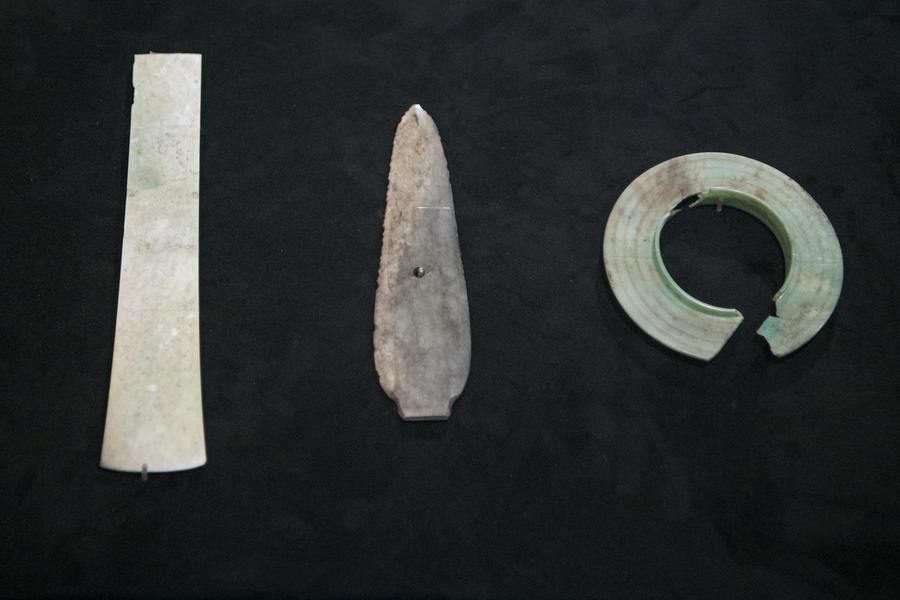
This photo taken on July 21, 2024 shows jadeware discovered at the Sanxingdui Ruins site in Guanghan City, southwest China's Sichuan Province. [Xinhua/Tang Wenhao]
The newly found artifacts include raw jade and stone materials, waste materials, fragments and finished pieces, suggesting a relatively complete chain of handicrafts.
"The discovery of the workshop sheds light on several mysteries, such as the origins of the large quantities of jade and stone raw materials found at Sanxingdui, the techniques used in their crafting, the production processes, and the distribution methods involved," said Ran Honglin, who is in charge of the archaeological work at Sanxingdui Ruins site, under the research institute.
ANCIENT CITY
Covering an area of 12 square km, the ruins are believed to be the remnants of the Shu Kingdom, dating back some 4,500 to 3,000 years.
Based on the newly confirmed city gates, water gates and roads, and combined with earlier discoveries of the sacrificial and palace areas, archaeologists believe that the core area of the ruins is a meticulously planned ancient city, surrounded by tall city walls, with an area of approximately 3.6 square km.
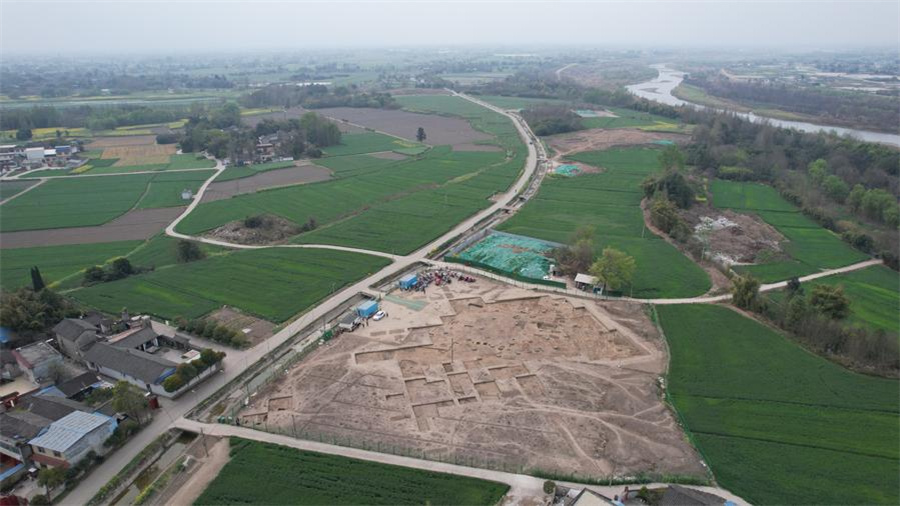
An aerial drone photo taken on March 23, 2024 shows a view of the Sanxingdui Ruins site in Guanghan City, southwest China's Sichuan Province. [Sichuan cultural relics and archaeology research institute/Handout via Xinhua]
The city's northern and southern parts are divided by a river, with the northern section housing the palace and workshop areas, while the southern part contains the sacrificial area. Water gates were situated on the eastern and western sides, and the city was surrounded by thick and sturdy walls with gates and roads, connecting it to the surrounding regions.
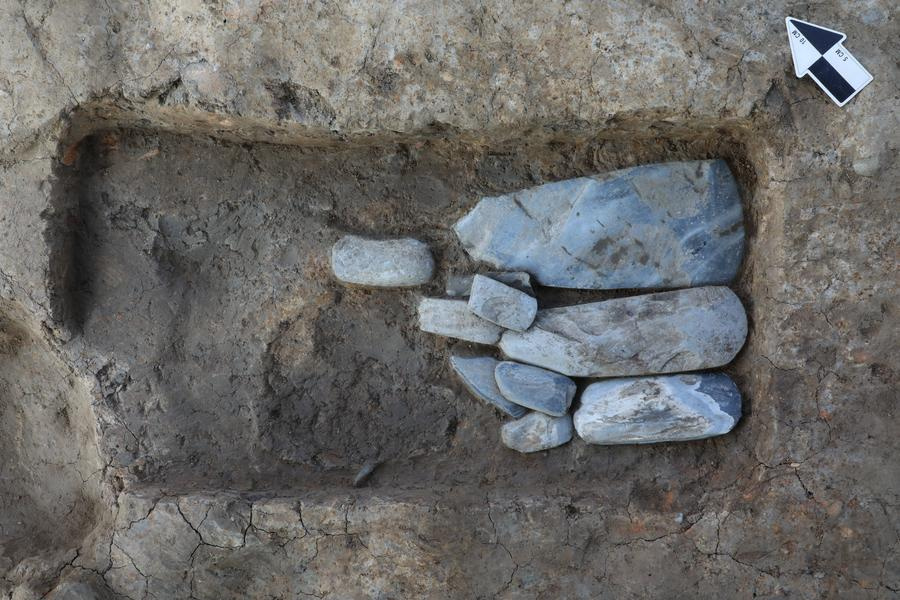
This file photo taken on March 14, 2023 shows the fourth layer of a stone axe pit discovered at the Sanxingdui Ruins site in Guanghan City, southwest China's Sichuan Province. [Sichuan cultural relics and archaeology research institute/Handout via Xinhua]
"The archaeological discoveries and research into the layout and planning of the Sanxingdui ancient city highlight the wisdom of ancient residents, underscoring the depth and enduring legacy of the ancient Chinese civilization," said Sun Hua, a professor from the School of Archaeology and Museology at Peking University.
Lei Yu, curator of Sanxingdui Museum, believes that large cities from the Shang Dynasty (1600 B.C.-1046 B.C.) often had concentrated areas for handicraft workshops, similar to modern industrial zones. "Following these clues, it may be possible to locate additional workshops for bronze-making, gold-making and more."
INTERNATIONAL RECOGNITION
Since the first scientific archaeological excavation in 1934, Sanxingdui has continuously drawn global attention. Domestic and international experts and scholars from various fields have been invited to participate in the research of the ruins.
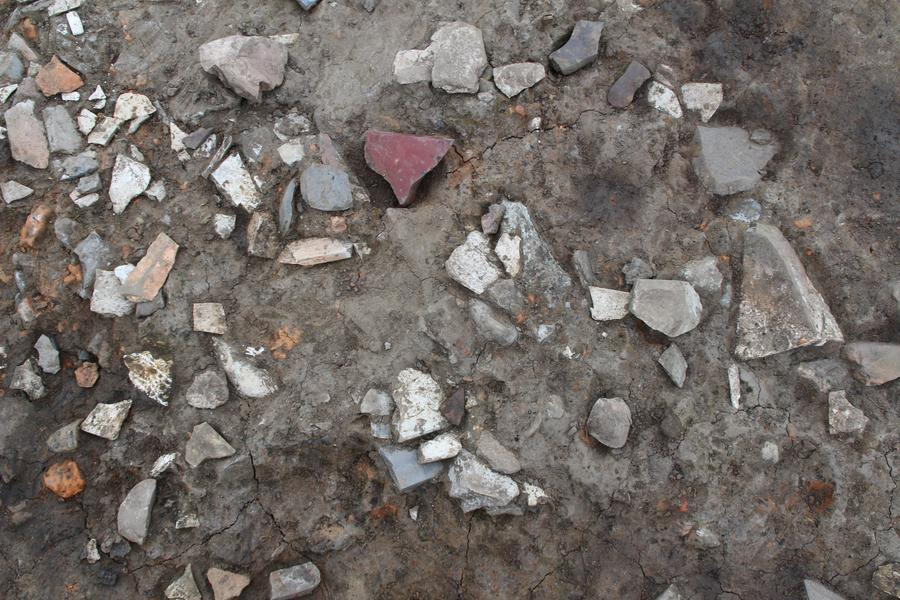
This file photo taken on Dec. 1, 2023 shows a collection of jadeware and stoneware discovered at the Sanxingdui Ruins site in Guanghan City, southwest China's Sichuan Province. [Sichuan cultural relics and archaeology research institute/Handout via Xinhua]
So far, cultural relics from the site have been exhibited overseas more than 70 times, reaching over 100 cities in countries such as the United States, Canada, Britain, France, Germany, Italy, Australia, New Zealand, Japan and Singapore, attracting over 10 million visitors.
Last month, Sanxingdui cultural relics were displayed in Egypt, Greece and Sweden. The international public has not only marveled at the artifacts but also noted China's advancements in archaeology.
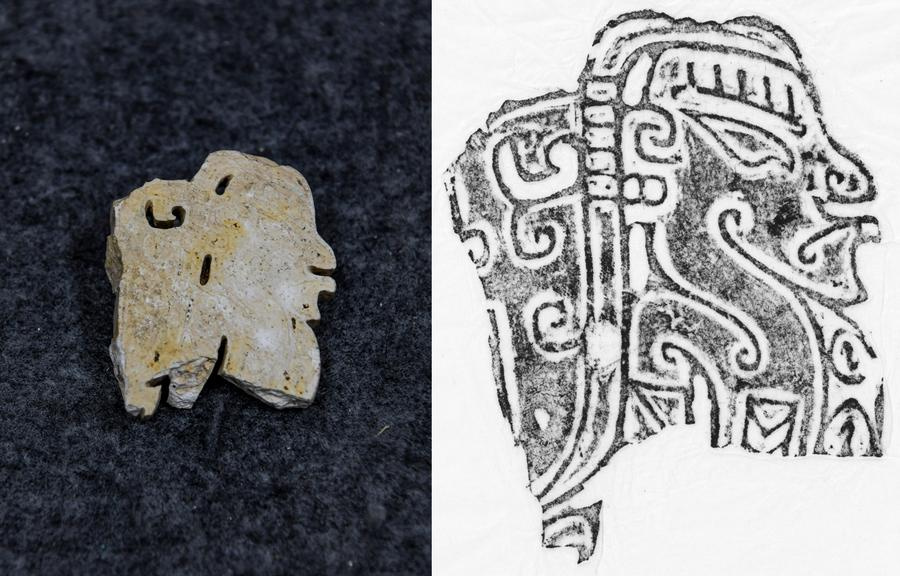
This combo photo shows a side-profile human figure carved on jade discovered at the Sanxingdui Ruins site in Guanghan City, southwest China's Sichuan Province (left, photo taken on July 10, 2024 by Xinhua photographer Wang Xi) and the rubbing of it (provided by Sichuan cultural relics and archaeology research institute). [Xinhua]
Jessica Rawson, a renowned British archaeologist, historian and sinologist, praised the Sanxingdui excavation's approach, which includes simultaneous protection and excavation, interdisciplinary integration and multi-team cooperation. She also commended the innovative technologies used by Chinese archaeologists, such as the constant-temperature and constant-humidity excavation chambers and on-site emergency protection platforms.
Rowan Flad, an archaeologist from Harvard, visited the Sanxingdui site earlier this month and engaged with Chinese experts on various aspects of the excavation, including bronze casting techniques, ivory micro-sculpture and the jade and stone workshop.
The discoveries at Sanxingdui showcase the brilliant and splendid ancient Shu Kingdom culture, highlighting the diversity and unity of Chinese civilization. These findings are crucial for understanding the development and evolution of early Chinese civilization, Flad said.
Video reporters: Xue Chen, Tong Fang, Wang Xi; Video editors: Zhang Mocheng, Luo Hui, Zhou Sa'ang
























